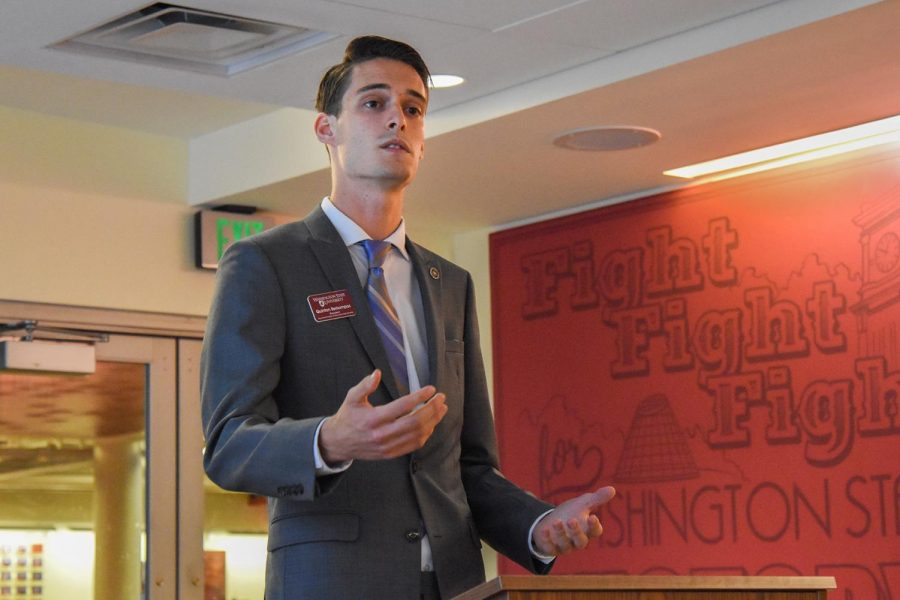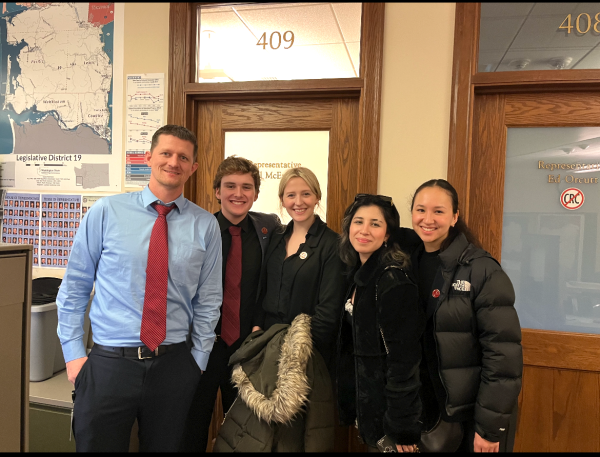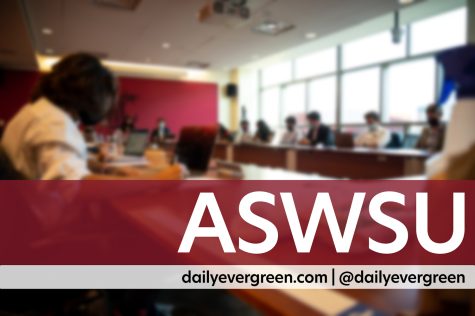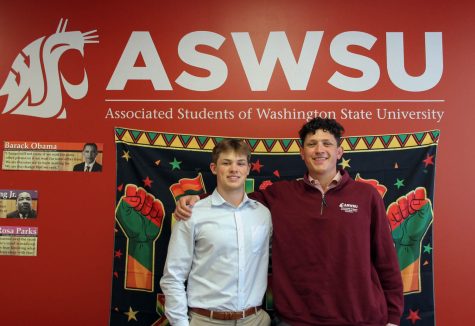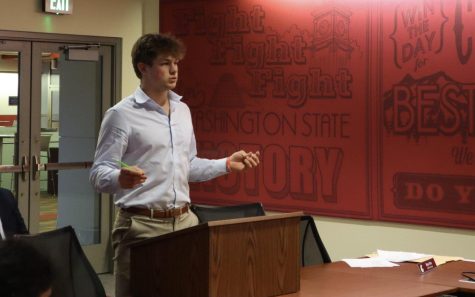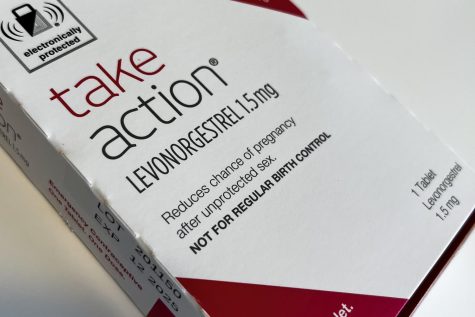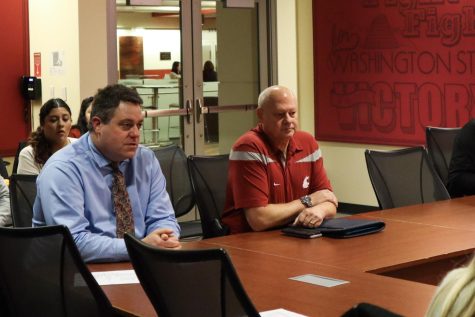ASWSU addresses abortion demonstration
Senate discusses choice to not make statement to students on campus
NICOLE LIU | THE DAILY EVERGREEN
ASWSU president Quinton Berkompas discusses the university’s handling of the anti-abortion demonstrations on Wednesday at the CUB and its decision to not make a statement beforehand.
September 19, 2019
The ASWSU President addressed the abortion demonstration that happened Monday and Tuesday during the ASWSU senate meeting on Wednesday.
President Quinton Berkompas testified to the senate and discussed university administration and ASWSU’s motivation to not inform students the demonstration was happening.
“The group went through the legal hoops they had to jump through,” he said. “They’ve sued multiple universities in the past that restricted it.”
Administration and the university’s community response team knew about the demonstration for weeks prior and made the decision to allow it on-campus, Berkompas said.
Linda Vargas, a member of the response team and an all-campus senator, said the response team is made up of staff and students across the university.
“If the university restricted it, they would’ve lost the lawsuit,” Berkompas said. “It would’ve been our tuition money going to that organization.”
He said they didn’t know exactly what the demonstration would include and were caught by surprise from how graphic it was.
“Sometimes they come out with picket signs, sometimes they come out with 9×14 signs. You never really know what they’re going to do,” Berkompas said.
College of Arts and Sciences senator Connor Simmons said he felt the ratio of students in favor of the demonstration to those against it was disproportional.
“Because the student body was not informed, there was no way to organize a peaceful counter-protest,” Simmons said.
Berkompas said the response team and administration felt that warning students before the demonstration would’ve added fuel to the fire.
“Acknowledging their presence would’ve spread their toxic message,” he said. “It would’ve had good intentions, but we don’t think it would have worked out.”
CAS senator Diana Sotelo said not warning students could have triggered people who have gone through related experiences.
“We must put ourselves in the shoes of the women that had to walk past those signs,” she said.
The university gave alternative walking routes to students and signs that warned them of the demonstration, but Vargas said it was not enough.
“This group didn’t come to change minds,” Berkompas said. “This group came to campus to cause controversy and offend people — we felt that not giving them attention was the best way forward.”
Vargas said the response team is working to find a way to limit graphic demonstrations in the future.
“Those signs were ridiculous,” Vargas said. “We can’t totally stop them from coming in the future, but we will be more prepared next time.”
Berkompas also addressed the approximate one-million-dollar student services and activities fee that was being waived by university scholarships every year.
WSU scholarships include fee waivers which means some students do not pay Service and Activities fees, he said. This means the S&A committee doesn’t collect money from them.
“Administration made the decision to waive fees without telling students,” Berkompas said. “They agreed this was a problem.”
He said he hopes to work with the university to ensure that the scholarships waive money from tuition rather than S&A fees.

